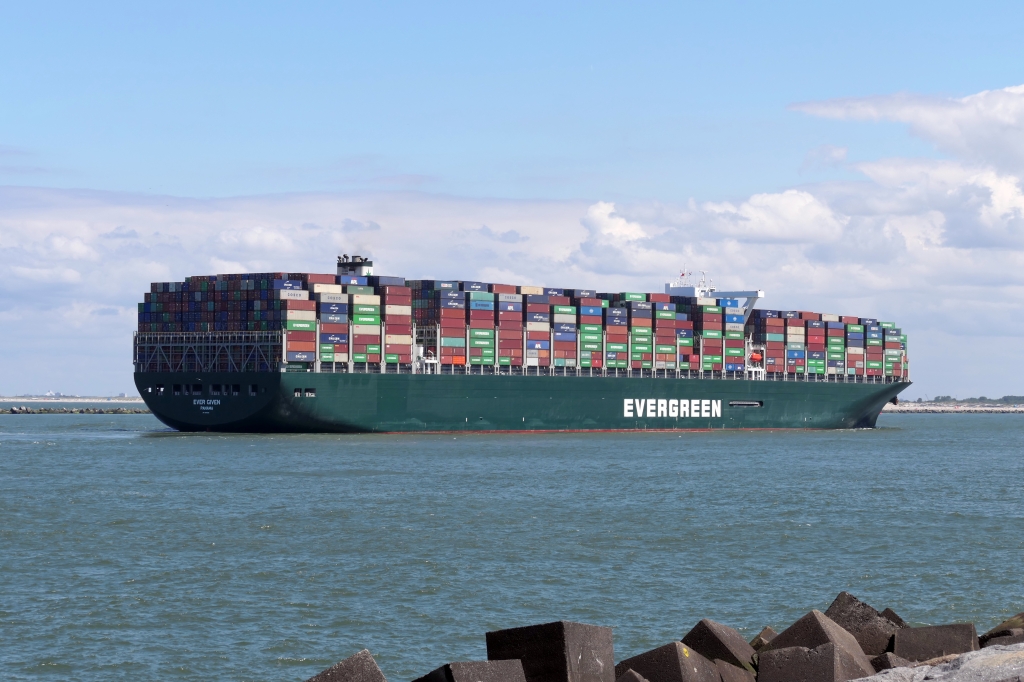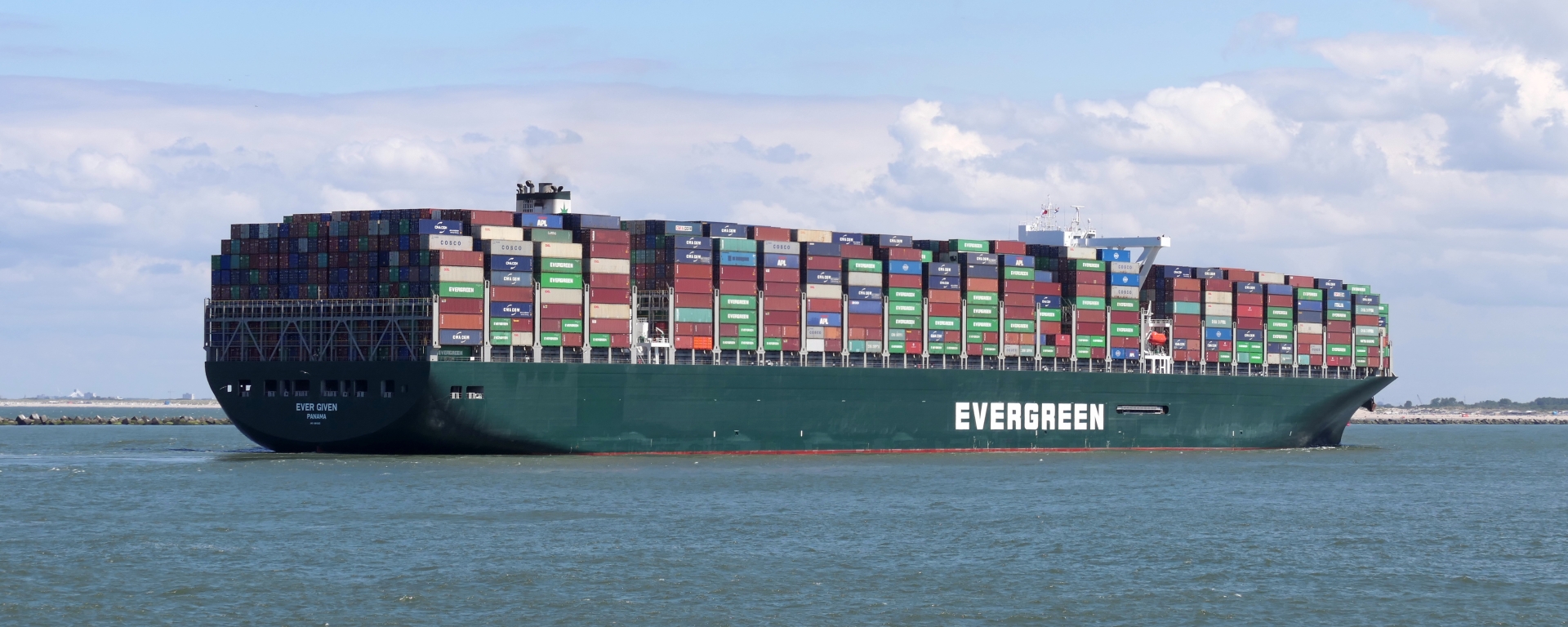by Olaf Merk

On 23 March, a mega container ship got stuck in the Suez Canal – and remained stuck for six days. Despite the digging, towing and dredging, the only thing that was unblocked was creativity in the form of Suez memes on the web. The mega-ship proved to be the vessel on which all possible human problems could be projected. Now that she is refloated, hilarity can ebb away and give way to reflections on the implications of this incident.
Let’s start with the principal actors: the Canal and the ship. The Suez Canal is one of the world’s maritime chokepoints. Around 12% of world trade passes through it, approximately fifty ships each day, mostly container ships and tankers. The Suez route is considerably shorter than its alternative, the Cape route. Nevertheless, shipping companies regularly snob the Suez Canal, especially in times of low oil prices and as a way to put pressure on the Suez Canal Authority to cut canal dues.
The other actor was the mega-ship: the “Ever Given” is 400 metres long and 60 metres wide, she can carry more than 20 000 containers. This is exactly the type of ship for which the Suez Canal was widened and deepened in 2016.
What happened?
How exactly did the giant vessel get stuck? Little certainty here so far, and much conjecture. The ship owner remained silent throughout the process, as did the ship operator. The ship manager blamed the wind and denied that there was power failure. That it is a mega-ship that caused an important global trade route to shut down is no coincidence, and many experts have warned about the risks they create. These gigantic ships are more difficult to manoeuvre and get more easily stuck due to their deep draft. They are also heavier than smaller containership, so more complicated to refloat.
More clarity should come from the investigation of the accident. The flag state of the “Ever Given” has a reputation for dodging such responsibilities, but it is hard to imagine that it dare to do so now given the global attention. Thanks to a heroic effort by the salvage company and the canal authority the ship was freed after a week and traffic on the world’s busiest shortcut could resume. Zoom out, happy ending.
But not really. The backlog of hundreds of other ships waiting to transit through the Canal is creating enormous challenges in ports and throughout the whole supply chain. Some observers calculated the costs of the Suez Canal blockage to be between USD 6 to 10 billion per week. Just remember: the reliability of ship schedules has been in freefall since June 2020. Two out of three container ships are delayed; in the beginning of 2021 the average was five days. If a few days of Suez Canal blockage leads to billions of dollars economic costs, imagine the extent of the loss due to delayed vessels just prior to the incident.
The costs of no canal
The supply chain disruption that we will see in the coming weeks is the quintessence of the mega-ship: maximise the economies of scale on the ships, but leave it up to ports to clean up any mess that may result. Ports will now be put under pressure to catch up and find additional handling capacity when this was already stretched. They will need to keep some vessels waiting and get blamed for “port congestion” that is not their fault.
This is nothing new: various organisations have recently blamed port congestion for increased freight rates, although these already started to rise in May 2020, well before port activity was back to normal after the dip due to Covid-19. Do not expect carriers to pay for the situation that their mega-ships have caused. The Suez blockage has reduced effective ship capacity, so will likely lead to further increases in ocean freight rates. Customers and ports will pay the price instead, and maybe a few insurers.
A report on “The Impact of Mega-Ships“ the ITF published in 2015 described this dynamic, in which mega-ships create benefits and profits for their owners and operators, while the costs they incur – such as those for longer berths or truck congestion in port cities – are left for others to pay.
Deeper causes of disruption
At that time, the mega-ship strategy of carriers was, to some extent, self-defeating: as new mega-ships contributed to oversupply of ships, ocean freight rates were going to be low and profits limited. This has changed now. The intended effect of mega-ships was to force a market consolidation, which has happened. The unintended effect has been increased cooperation between the major carriers. The world’s top ten carriers are now interlinked in various alliances and consortia, providing carriers with the mechanisms to coordinate ship capacity. During the Covid-19 crisis, they used this power to their advantage by stabilising and pushing up freight rates
Thus, the current disruption of the maritime supply chain is not about a mega-ship stuck in the Suez Canal, and it not about lack of adequate infrastructure in ports – ultimately, it is about a lack of effective competition policy for global liner shipping. In Europe, regulators are now urging ports to free up capacity to deal with the after-effects of the Suez incident. There have not been reports that they also urged carriers to reinstate more capacity to Asia-Europe trade routes when trade picked up again in Q3 and Q4/2020, but carriers deployed 4% less capacity than over the same period in 2019.
The mega-ship incident in the Suez Canal has shown the vulnerabilities of the global maritime supply chain. Some stakeholders will no doubt push for a new expansion of the Suez Canal, more port infrastructure and the development of alternative maritime routes, for example the Arctic Sea routes. This would be misguided. The main vulnerability is the mega-ship and the world of integrated mega-carriers that it has created.
Changes in deployed container ship capacity on different trade lanes (YoY)

Source: ITF, MDS Transmodal
Olaf Merk is Project Manager for Ports and Shipping at the International Transport Forum
